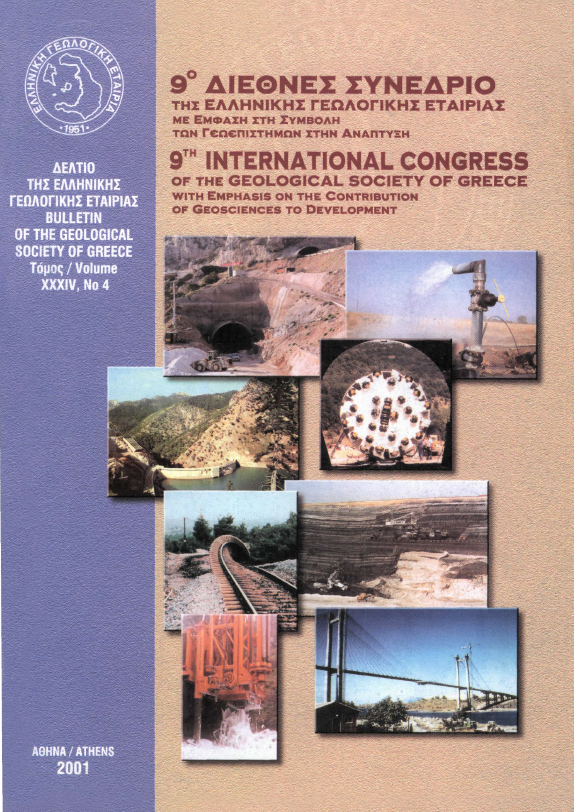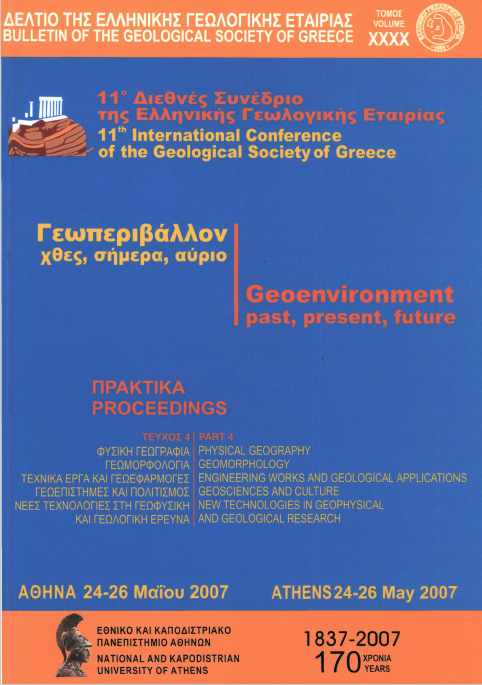INTERPRETATION OF VLF MEASUREMENTS RELATED TO HYDROGEOLOGICAL SURVEYS
Abstract
The aim of the application of VLF surveys in hydrogeology is the contribution to the decision making as concern the construction of a well. Geophysical survey by the application of VLF method must respond to the questions (a) if the construction of a well should be proposed or not, and if the answer is yes then (b) where exactly must be located. These answers are very crucial ones, since VLF methods is applied mainly in areas where bedrock is close to the surface and no chance has a well if it will not drill an aquiferous fault. Problems arise by the fact that the target to be detected is a conductive body which is interpreted as a fault filled with water. The major question that is posed to the surveyor is if the conductivity of the fault is caused by fresh water or by clay materials or saline water. Forward models of different resistivity contrast between host rock and conductive body have been computed and examined. Results show that interpretation of the imaginary part is very important to the evaluation of the data. Since the conductor -in the meaning of water presence onlymust be a medium one, a high value of the real part should be expected in parallel with a close to 0 value of the imaginary component which also must show one peak to the Fraser filtered data.
Article Details
- How to Cite
-
Vargemezis, G. (2007). INTERPRETATION OF VLF MEASUREMENTS RELATED TO HYDROGEOLOGICAL SURVEYS. Bulletin of the Geological Society of Greece, 40(2), 593–604. https://doi.org/10.12681/bgsg.16340
- Section
- Hydrology and Hydrogeology

This work is licensed under a Creative Commons Attribution-NonCommercial 4.0 International License.
Authors who publish with this journal agree to the following terms:
Authors retain copyright and grant the journal right of first publication with the work simultaneously licensed under a Creative Commons Attribution Non-Commercial License that allows others to share the work with an acknowledgement of the work's authorship and initial publication in this journal.
Authors are able to enter into separate, additional contractual arrangements for the non-exclusive distribution of the journal's published version of the work (e.g. post it to an institutional repository or publish it in a book), with an acknowledgement of its initial publication in this journal. Authors are permitted and encouraged to post their work online (preferably in institutional repositories or on their website) prior to and during the submission process, as it can lead to productive exchanges, as well as earlier and greater citation of published work.











